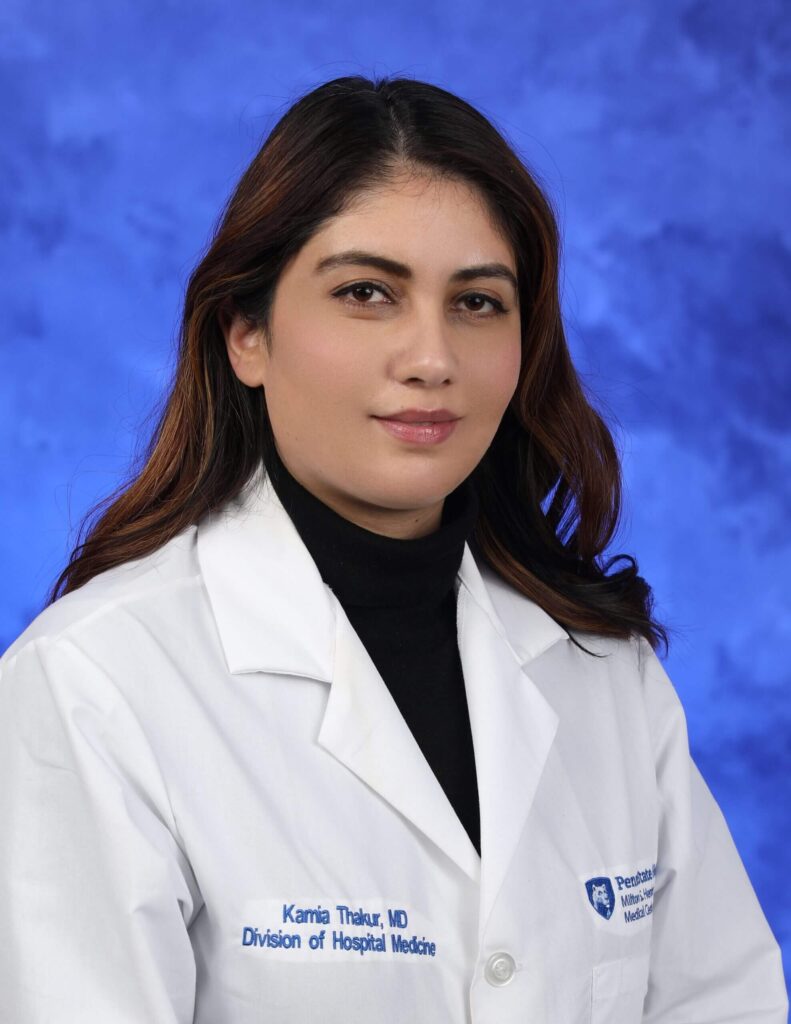Provider Spotlight: Dr. Kamia Thakur, Penn State Health

Dr. Kamia Thakur is a hospitalist and the Medical Director of Penn State Health’s Home Recovery Care program in Hershey, PA. The joint venture with Contessa was launched in June of 2022. Dr. Thakur recalls her initial introduction to the concept when the health system recruited its physicians to help with the program. “I was immediately intrigued,” she remembers. “Being a hospital-based physician often involves repetitive tasks, and I was seeking a change from the monotony.”
In contrast to her experiences as a hospitalist, Home Recovery Care offered innovative approaches to patient care. “After reading articles about similar hospital at home programs, both from the U.S. and abroad, and witnessing the positive feedback from the patients and the numerous advantages it offered, I was eager to be a part of it. I wanted to make a difference for both the institution and the patients.”
During the past nine months since the program’s inception, Dr. Thakur has observed an overwhelmingly positive response from the patients, similar to patient satisfaction seen in other programs. She has also identified numerous beneficial aspects that are often missing in hospital-based care. “I now have the opportunity to spend more time with my patients,” she shares. “In the hospital, with a higher caseload, time and energy are limited. I am unable to truly know them or fully understand their social determinants of health, which is a vital aspect of patient outcomes— a factor we often overlook or don’t have the ability to delve into.”
According to Dr. Thakur, the additional time spent with patients and gaining insight into their home environment profoundly impacts the quality of care provided. “We are revolutionizing the practice of medicine, a rare occurrence within the field of hospital medicine. This program positively transforms the patient-doctor relationship despite its tele-nature, and alters our perspective on this form of healthcare delivery,” she says. “We also recognize this inpatient care model addresses a pressing need in the healthcare industry. The model is here to stay and has the potential to grow into something significant.”
Despite the differences in resources between home and hospital settings, Dr. Thakur emphasizes that the goal is always to provide a hospital standard of care and achieve positive outcomes. “Traditional care models have streamlined the practice of medicine to such an extent that it is very easy to treat every patient and situation identically. There is very little room for art in the practice of medicine. We lack the time to truly engage with the patient and their families,” she says. “For me, the Home Recovery Care program has reintroduced the art of medicine, where every patient and their situation are unique.”
She adds that the benefits extend beyond the direct impacts on patients and their outcomes and positively impact over-burdened hospital systems. “Numerous studies have shown that inpatient care at home is more cost-effective than treating a patient in the hospital, and I believe that,” she states.
“There are fewer chances for hospital-acquired infections and complications, which immunosuppressed patients may benefit the most from. Not to mention, in-home care can be extended to various patient needs, including acute care, skilled care or even hospice care. The possibilities are endless.” She further adds, “The utility of this program is only limited by our thoughts.”
Dr. Thakur attributes much of the program’s success to the collaborative efforts of the entire team, which works towards the common goal of providing the best possible patient care. “Working on Home Recovery Care has reinstated the joy of being part of a multidisciplinary team, where I have developed close relationships with my nursing staff,” she explains. “We keep open lines of communication, collaborate, teach and learn from one another. It was challenging to maintain a similar team dynamic in the hospital setting. When a team works together cohesively, why wouldn’t patients have good outcomes?”
Furthermore, Dr. Thakur highlights that the program’s outcomes are supported by the data generated thus far, which has sparked excitement among other healthcare providers within the system. “Over the past ten months, we have served 150 patients, and only twelve of them required escalation back for a higher level of care. Despite the small sample size, we can confidently say that the majority of our admitted patients can be safely treated at home. However, if a higher level of care is needed, they can always be transitioned back to in-house care,” she proudly shares.
“I firmly believe that this program has tremendous potential to become the standard of care for a specific category of inpatients over time.”
